Onboard Sampling
Sampling the ocean properties helps calibrate float sensors
23 Mar 2024
When float deployments are planned, we try to make sure that they are at stations where CTD casts are also being completed. From these casts, full-depth samples of a variety of ocean properties (salts, pH, total alkalinity, nitrate, oxygen) are collected and analyzed by the different groups on board and will be used to calibrate the floats’ sensors.
In addition to the regular CTD cast, most of the float stations had a separate bio cast, during which water was collected from various depths to study the biological properties of the ocean. I collected my samples from these bio casts. I filled two 1-Liter bottles of seawater from several depths at each station based on the CTD profile: the chlorophyll maximum, the base of the mixed layer, between the mixed layer and the chlorophyll maximum, and at the chlorophyll max + 50m. I processed these water samples for High Performance Liquid Chromatography (HPLC)—a way that researchers can separate, identify, and quantify each component in the water, and Particulate Organic Carbon (POC)—one of the three different types of carbon produced by biological activity present in ocean water.
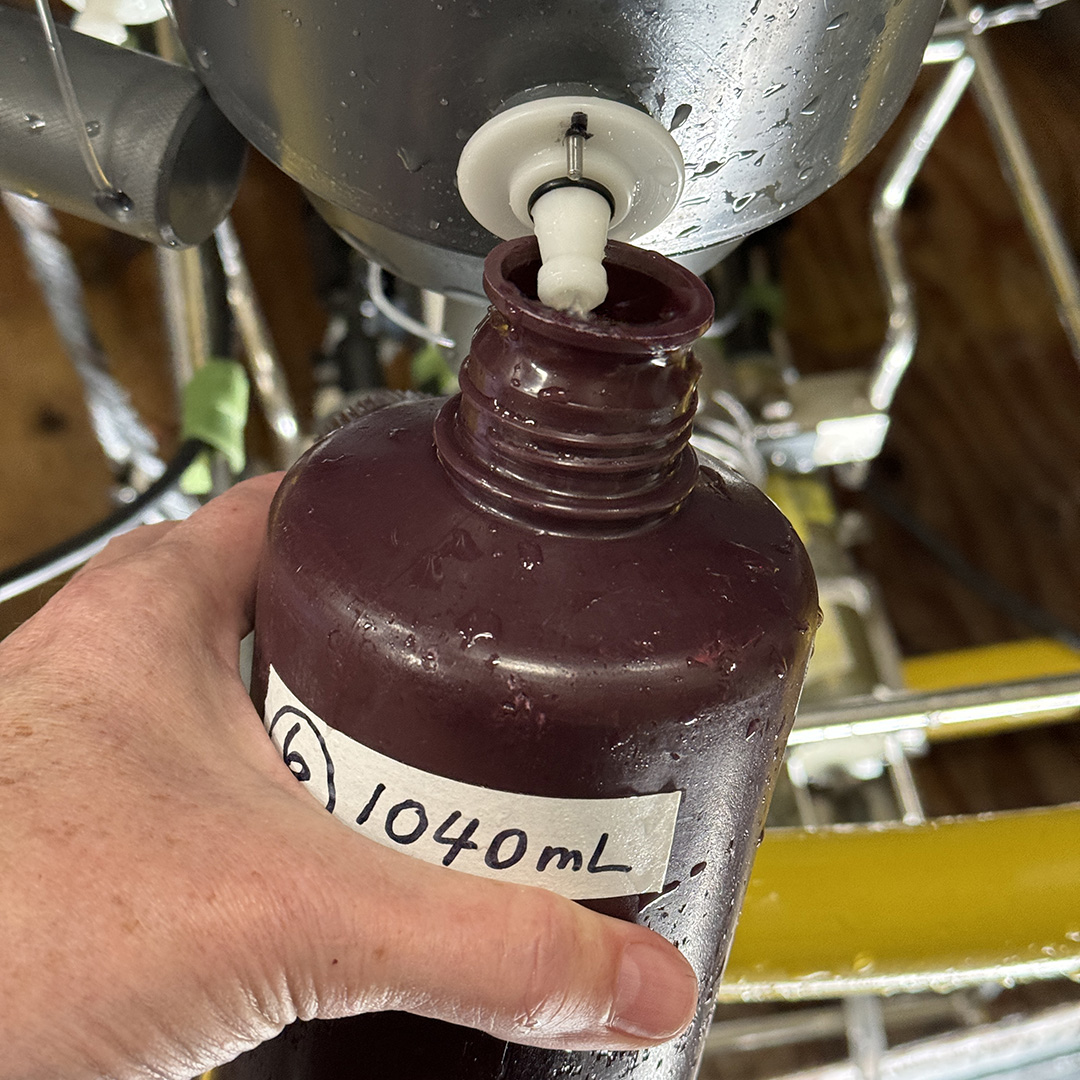
Water is collected from several depths for processing.
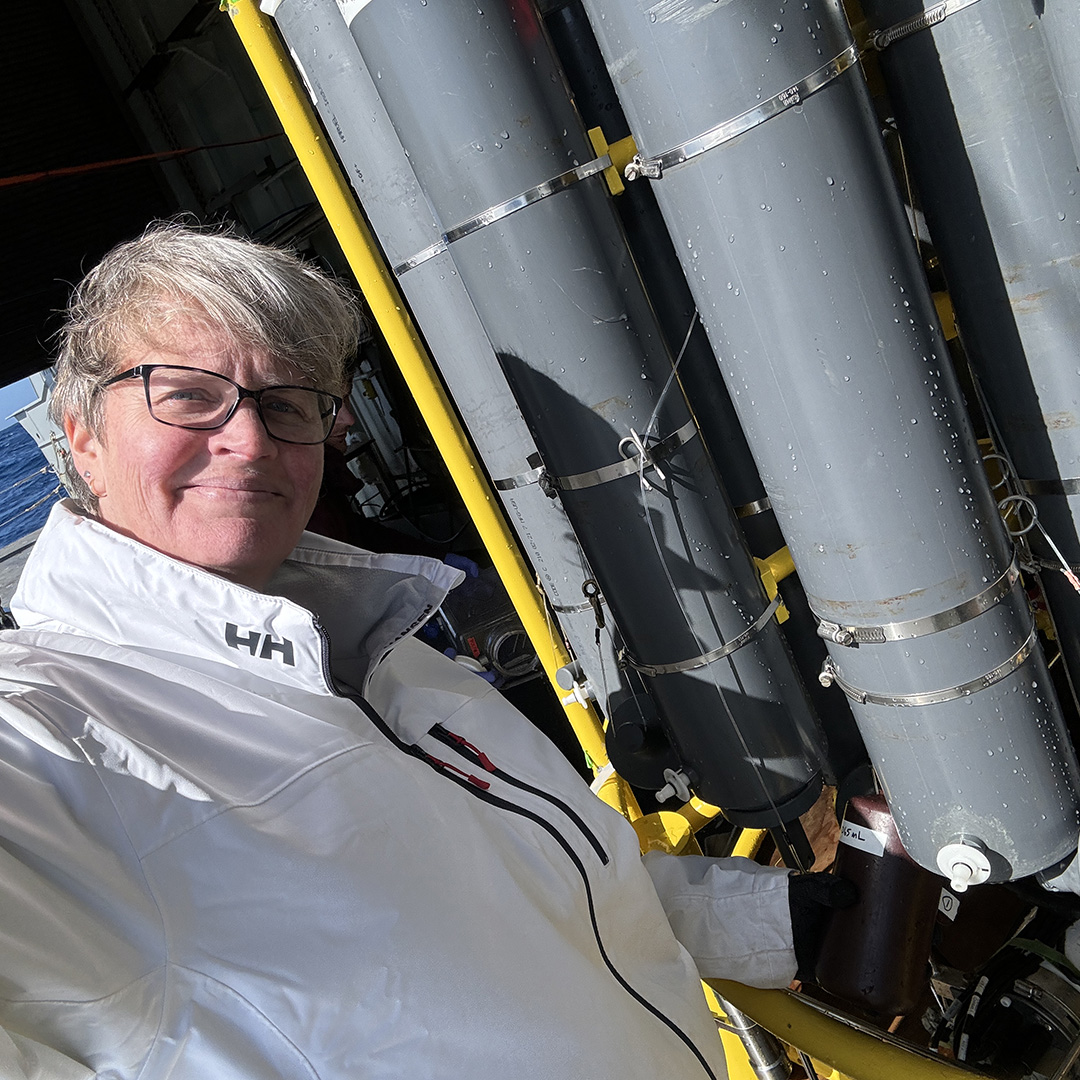
The sampling process takes about 30 minutes to collect all the water we need from the Niskin bottles.
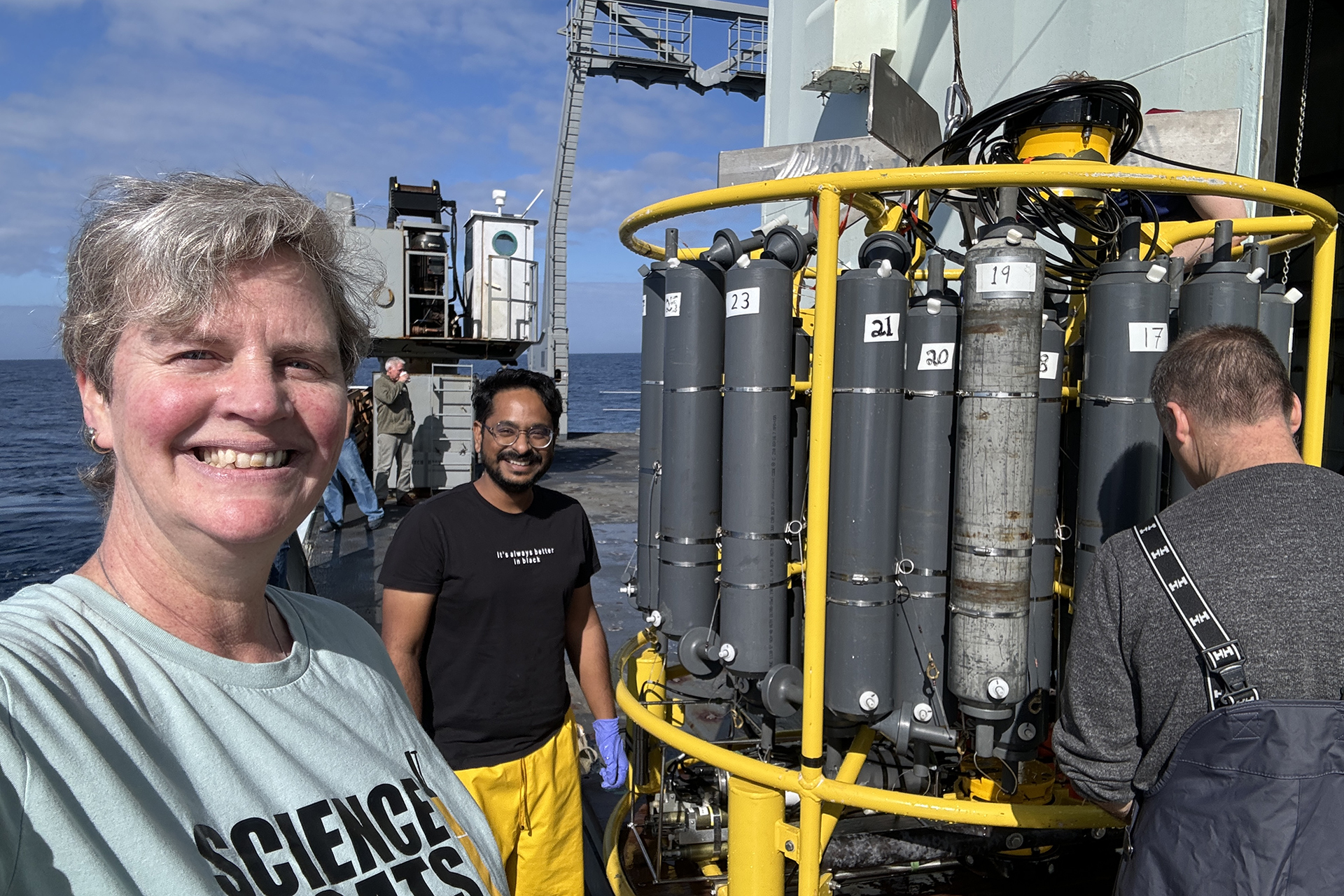
As we get further north, the weather has been nice enough to sample outside from time to time, which is a welcome change!
I used a vacuum filtration system onboard to filter the water from the Niskin bottles and capture the organic samples for processing. The system has six separate funnels fitted with tiny glass microfiber filters. The seawater is pulled through the funnel/filter so the only thing that’s left on the filter is the organic sample. Sometimes after I filtered one bottle, I could see the organic sample on the filter, which meant we got enough to process. Other times, like with samples from deeper depths or less productive waters, I would have to filter both bottles to make sure there was enough organic matter on the filter. I would then pack the filter with the sample on it into a tiny tinfoil envelope put it into the freezer at -80°C. Once we get back to shore, these HPLC and POC samples will be sent frozen for analysis at NASA for HPLC and SIO/UCSD for POC.
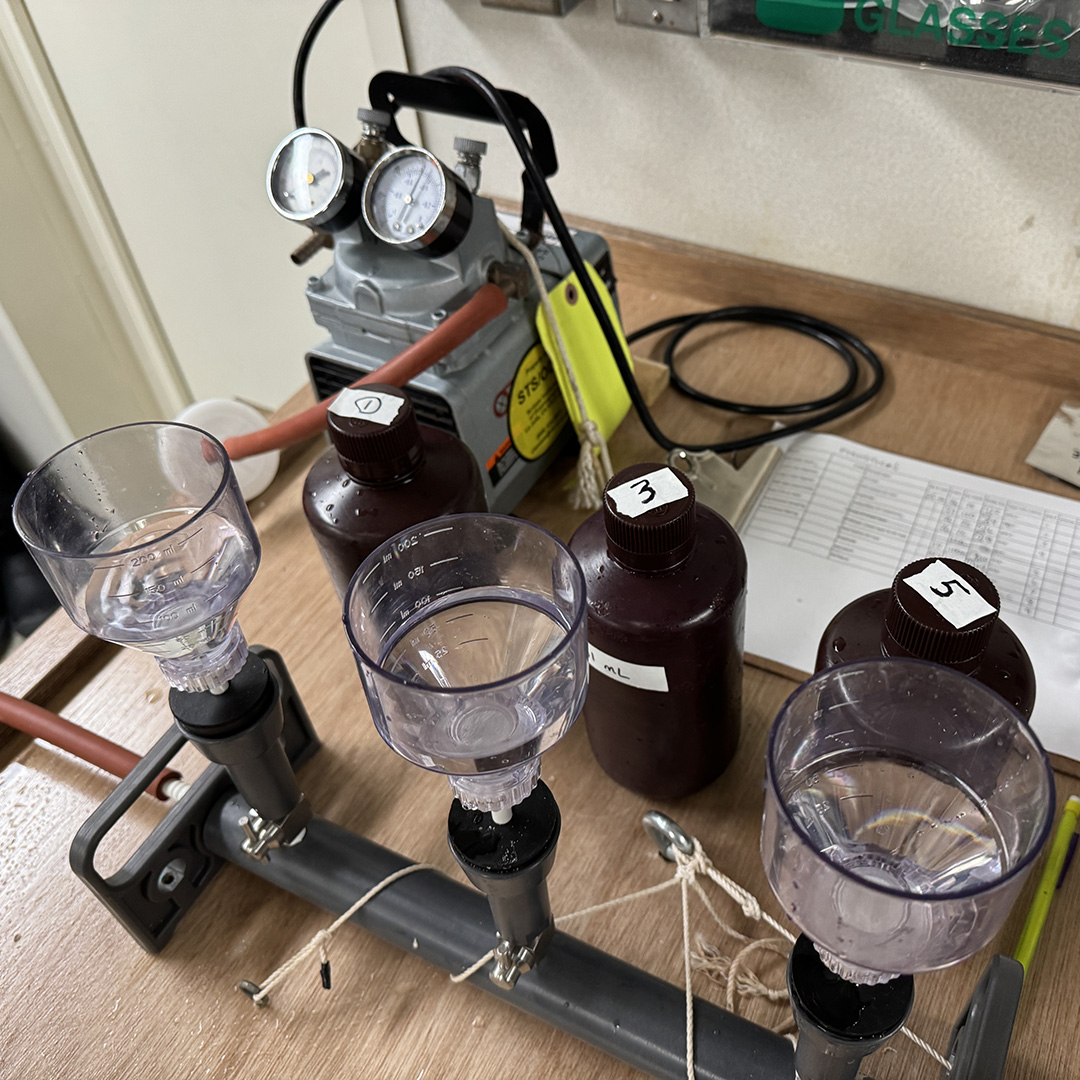
Our onboard filtration system consists of 6 funnels connected to a vacuum pump.
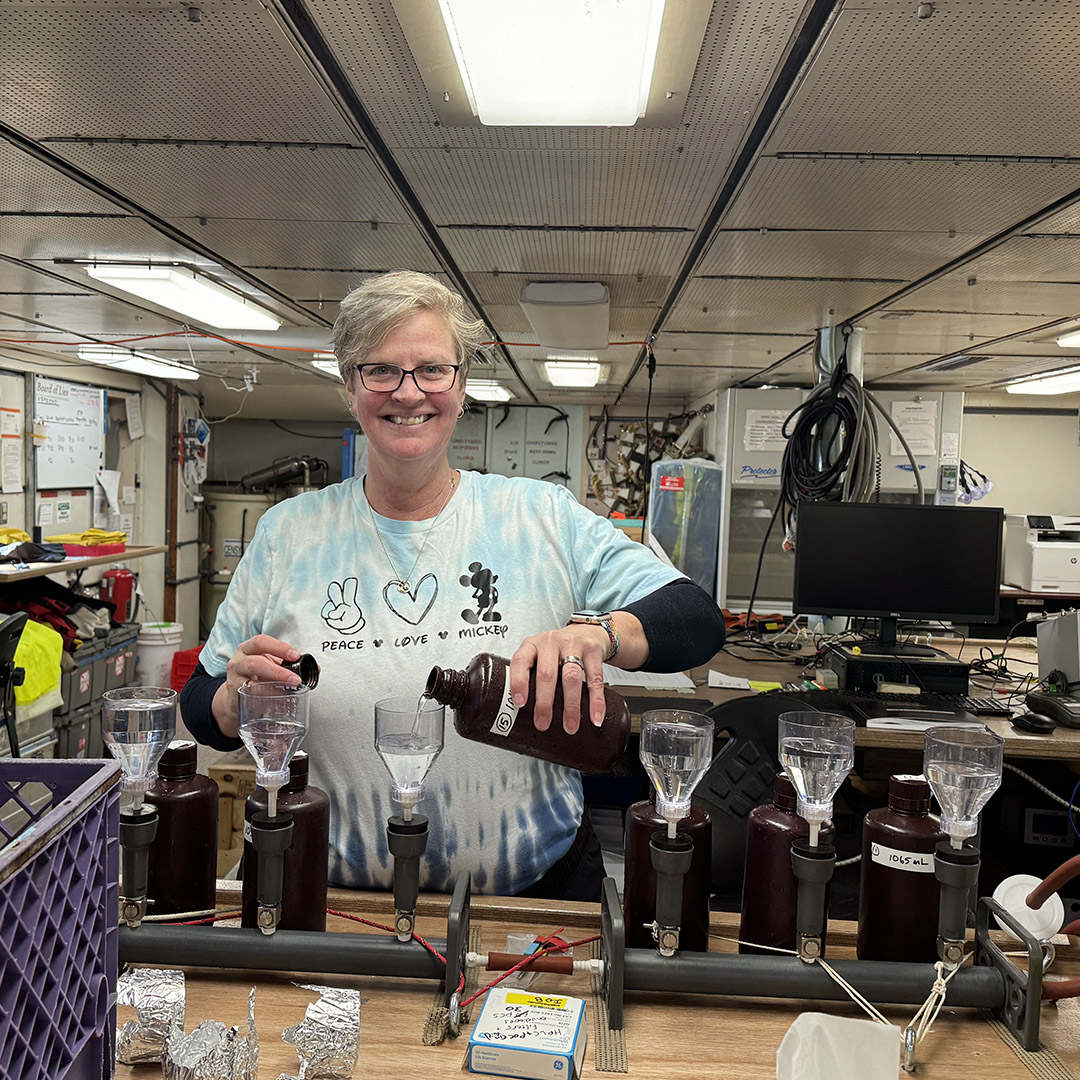
I have to keep track of each sample to make sure I pour it into the correct filter funnel.
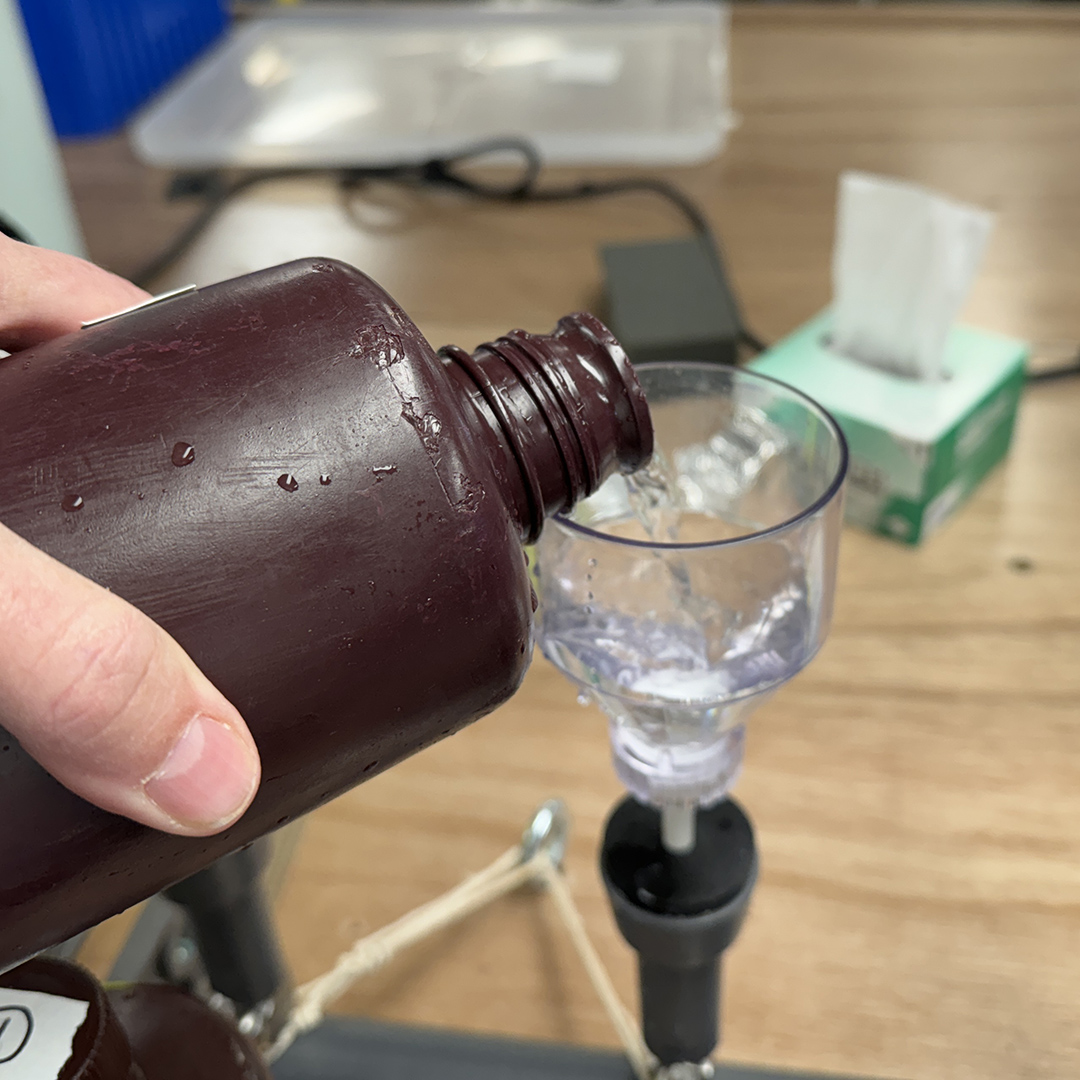
The sampling bottles are premeasured, so I have to take care not to spill any when I pour.
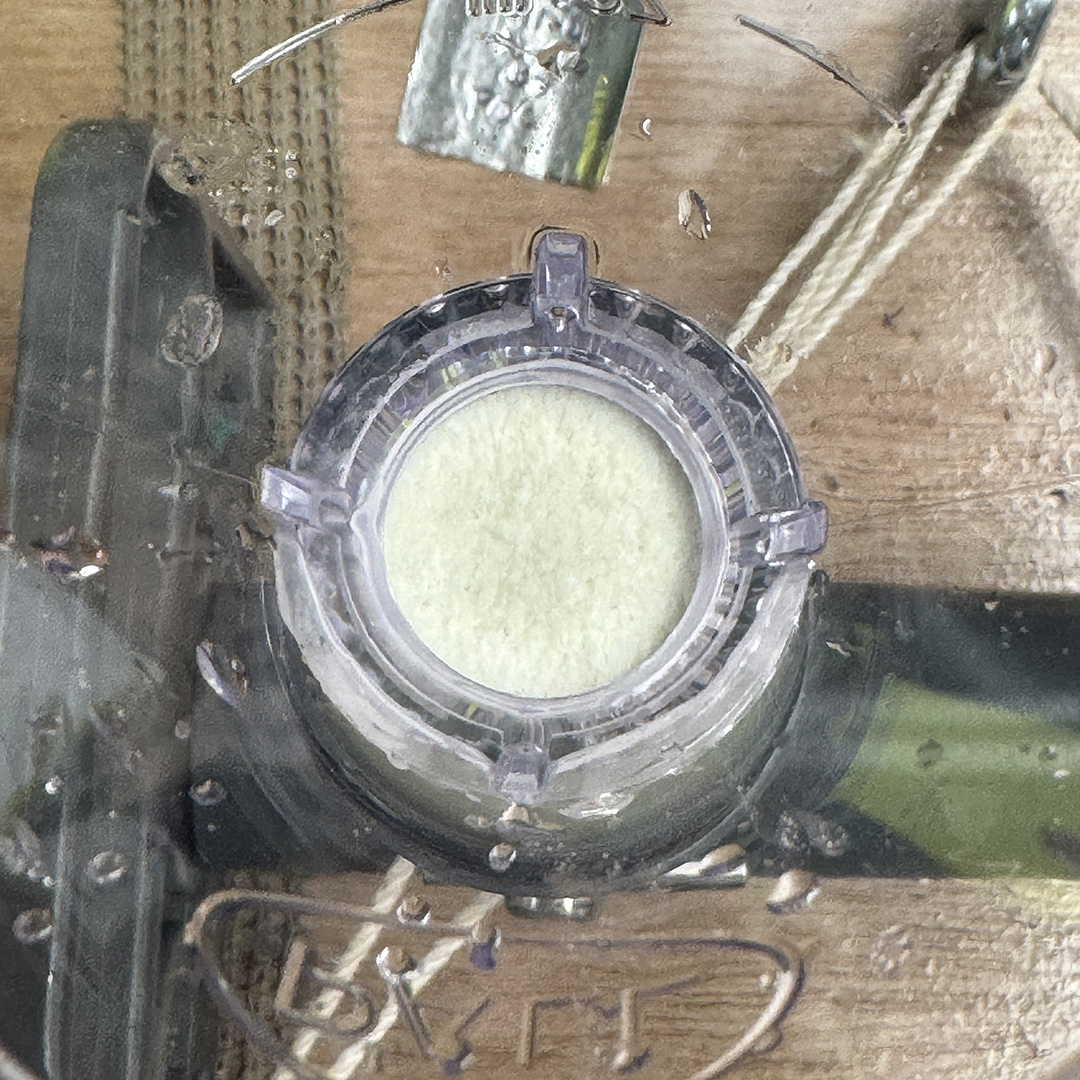
When the water has been filtered, you can see color from the sample on the filter.
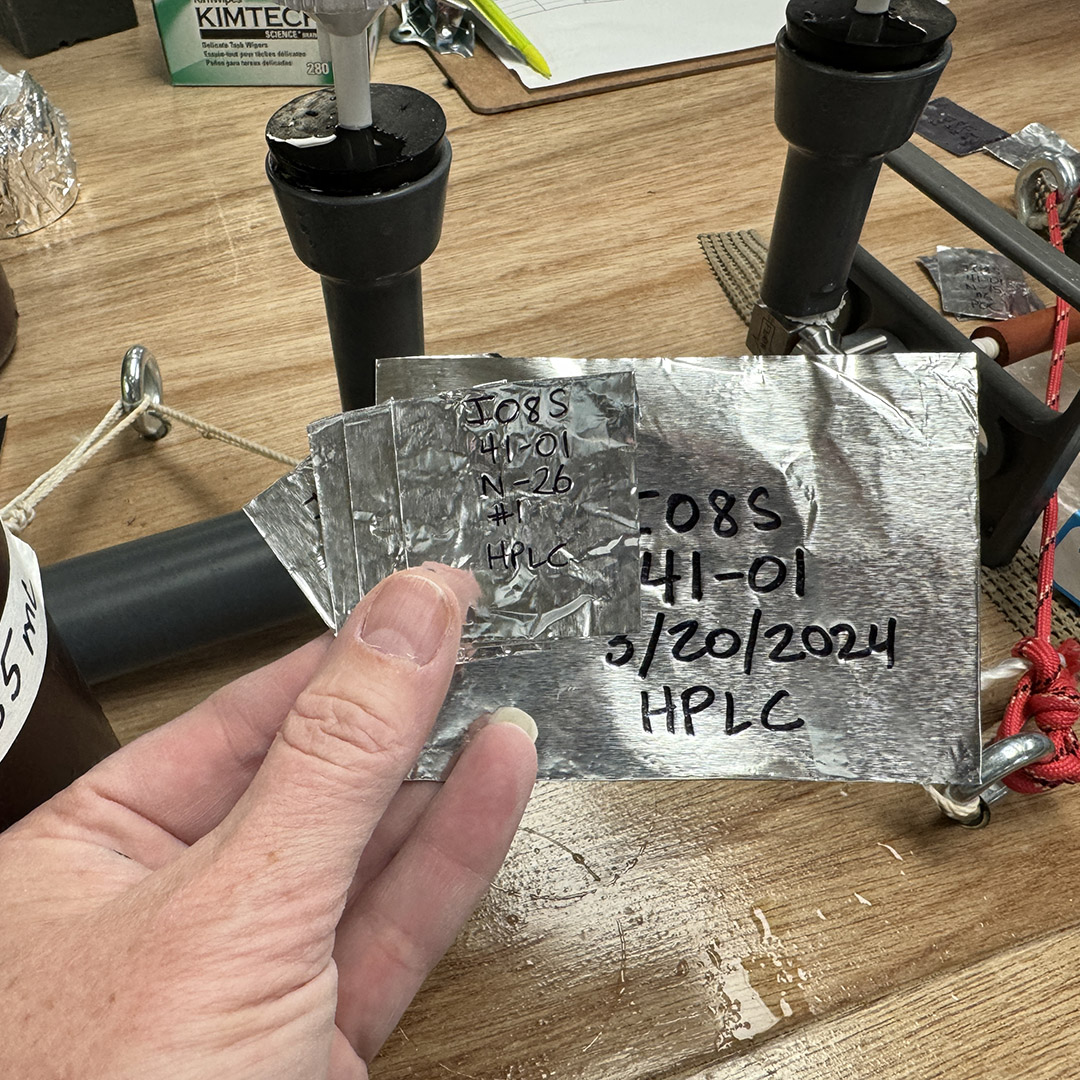
The filters are placed in tiny tinfoil envelopes.
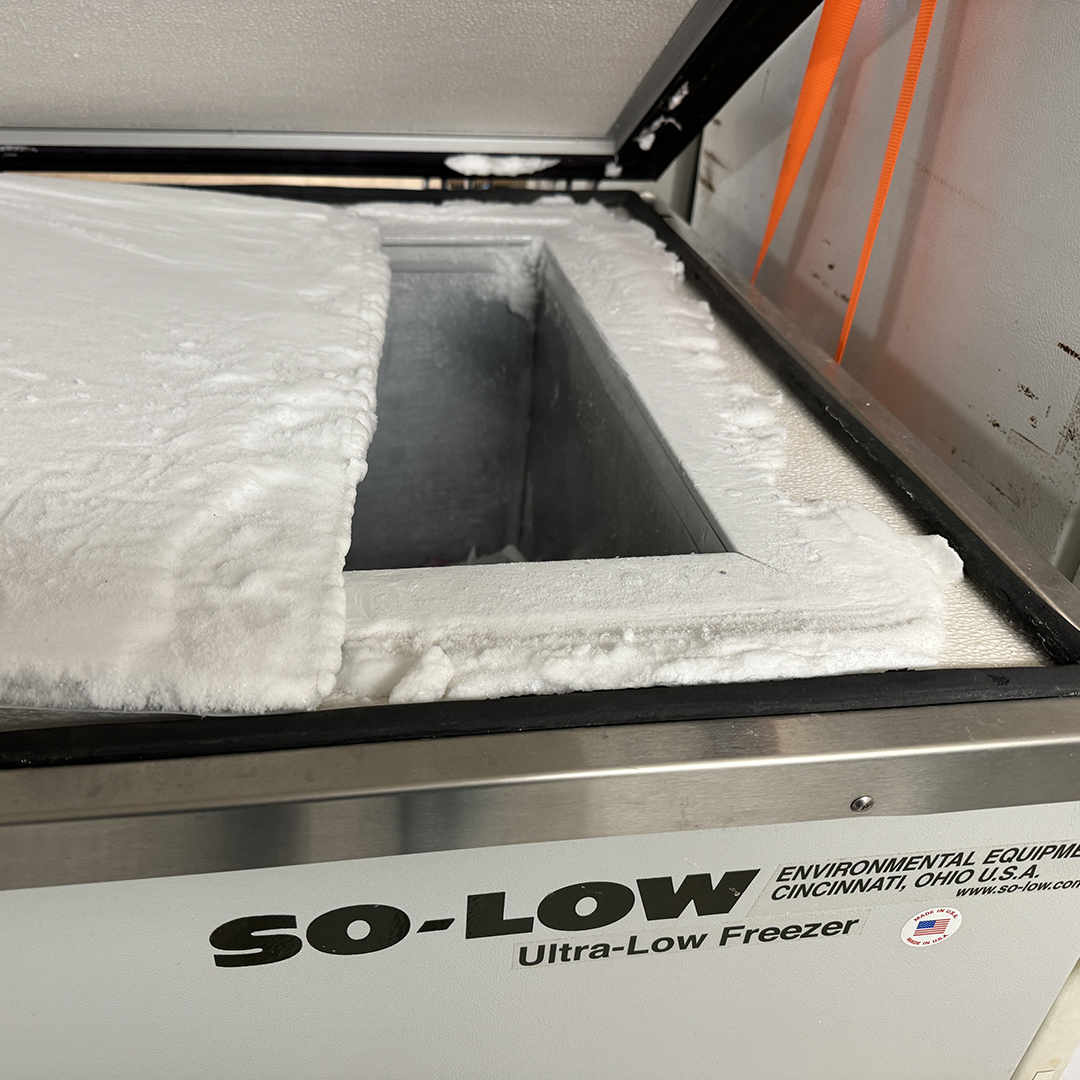
The envelopes are stored in the -80°C freezer until we get back.
All images by Jennifer Magnusson unless otherwise noted.
